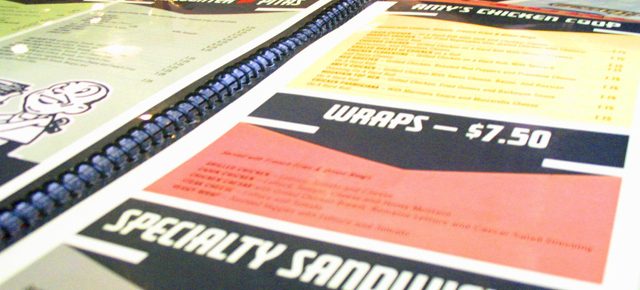Blogging for business is both important and challenging. Google’s Zero Moment of Truth data reminds us that people are now consulting twice as many online sources before formally “shopping” online and off. Studies from the Content Marketing Institute and Marketing Profs on the state of content marketing in both the B2C and B2B sectors consistently rank “creating enough content” among marketers’ chief concerns. At a time when content is more important than ever, many are struggling to maintain a robust blogging menu.
While 60% of businesses have implemented blogs as the hub of their content strategy, only 35% update them at least once a month while another 65% haven’t updated their blog in a year or more. If you are looking to feed your community on a more consistent basis, you might consider borrowing some tactics from the restaurant business.
Like a diverse menu, your blog shouldn’t rely too heavily on one type of blog post. As Iowa City restaurateur and blogger Kurt Michael Friese notes, “Different people like different things, same as with food, and that’s a good thing. Imagine a world where we all ate the same food!” Just like you need variety on a restaurant menu, you also need to ensure that you’re serving up variety on your blog as well.
Here are a few different types of blog posts you can add to your blogging menu.
Instructional Posts
People love reading blogs to learn. Take this opportunity to offer your readers insightful “How To” pieces (like this one!) that they can read through, bookmark, and use to help them through a challenge. Keep this style of post focused with quick and simple instructions. These pieces are great for numbered headlines, such as “9 Forms of Visual Content You Need to Know About.”
Opinion Posts
The opposite of a focused instructional post, is a long opinion piece. This is your chance to take a contrarian stand on an issue that matters to your industry. These posts can be longer and should get your attention with bold, edgy headlines, such as “Why Your Business Blog Sucks.”
Thought-Provoking Posts
Channel your inner Seth Godin and look for an opportunity to turn convention on it’s side. Take some time to hone your idea so you can lay it out in a few paragraphs for a medium sized post. Not too short but not so long that you say it all. The idea here is to get your readers thinking too. Likewise, your title shouldn’t let the cat out of the bag either. Try something cryptic or a question such as “Are You Listening?”
Comparison Posts
Easy to write and easy to read, this type of post utilizes the framework of something in pop-culture — a move or TV series — to impart an important lesson. Use this to draw the reader in with a headline such as “What Star Trek Can Teach Us About Performing a Brand Reboot.”
Guest Posts and Interviews
Remember, you don’t have to do all of the work yourself! Change things up and get a blogging break by soliciting guest posts from your community. If you’re afraid of losing your brand voice, you can also accomplish this by sending someone interview questions to answer.
Remember, your blog – like a restaurant – has many different types of visitors. Make sure you have a variety of items on your blogging menu to satisfy the appetites of as many guests as possible.
Have I missed a menu item that you like on your favorite blogs? I’d love to hear your suggestions in the comments below. Bon appetit!









